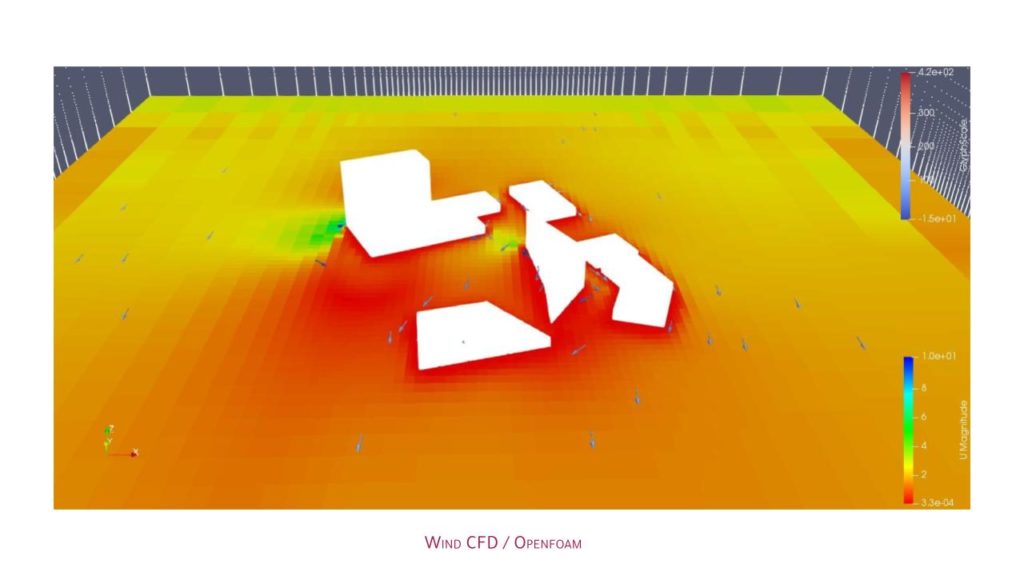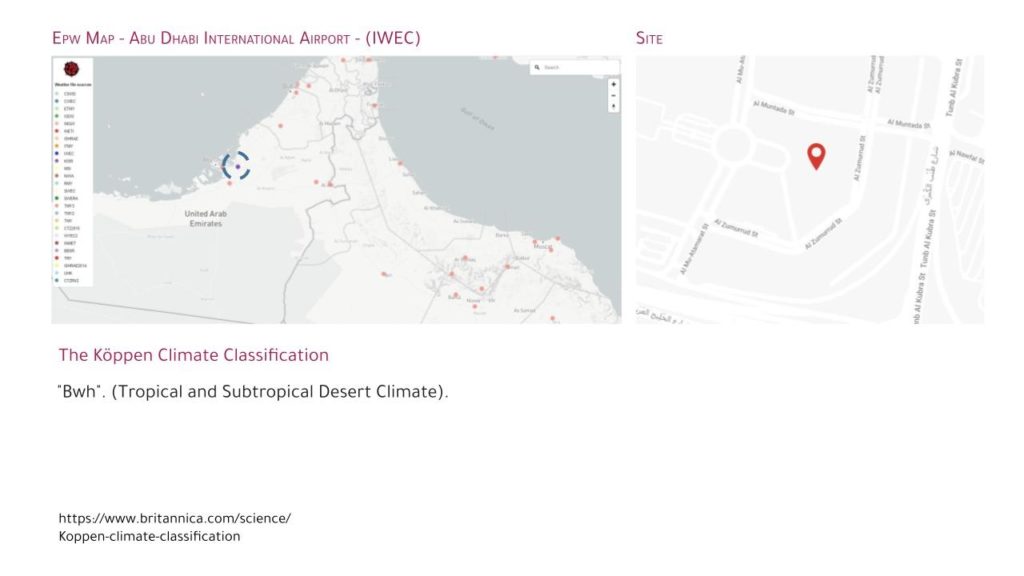
The Köppen Climate Classification subtype for this climate is “Bwh”. (Tropical and Subtropical Desert Climate). The average temperature for the year in Abu Dhabi is 81.0°F (27.2°C). The warmest month, on average, is July with an average temperature of 95.0°F (35°C).
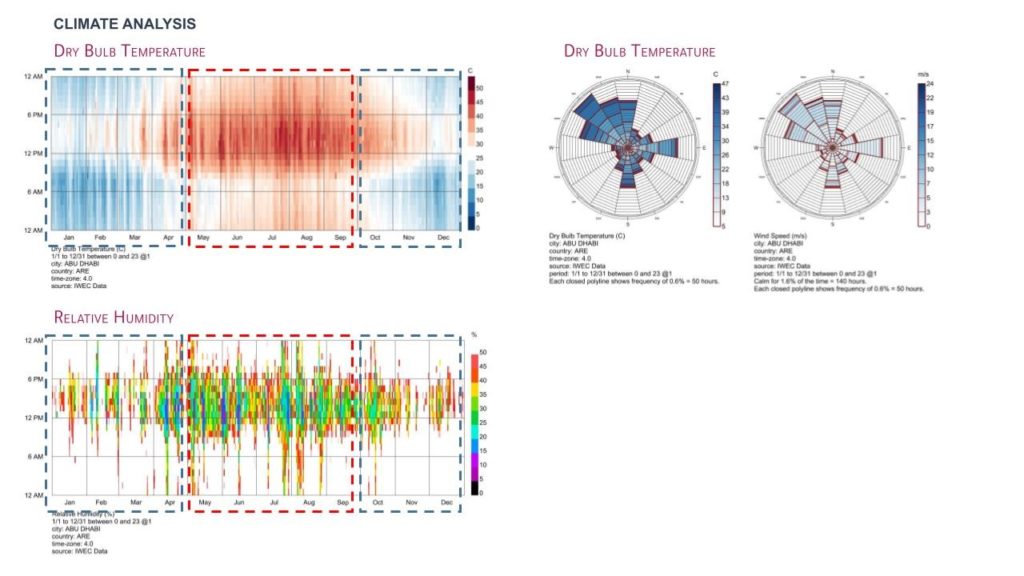
In Abu Dhabi, the summers are long, sweltering, oppressive, arid, and partly cloudy and the winters are comfortable, dry, windy, and mostly clear. Over the course of the year, the temperature typically varies from 15°C to 40°C and is rarely below 13°C or above 44°F. Hotter months are from May to September the cooler months are from January to April & October to December.
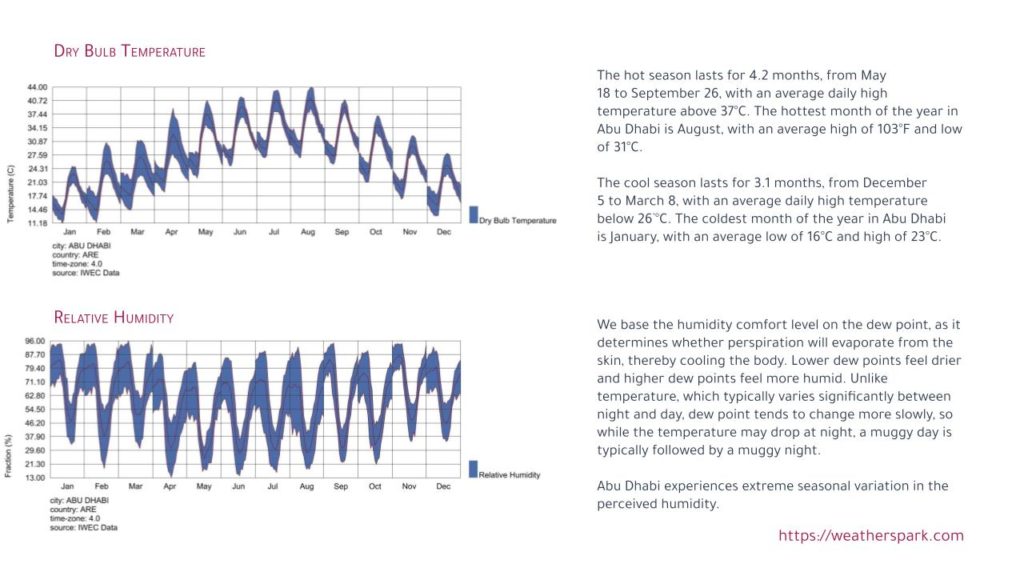


Key Points for Climate Analysis
- Extremely high temperature and humidity due to slow change in dew points.
- May to september are the hottest months and december to march are the coldest.
- Temperatures varies from 15°C to 40°C and is rarely below 13°C or above 44°C.
- High speed coastal winds from the north west direction.
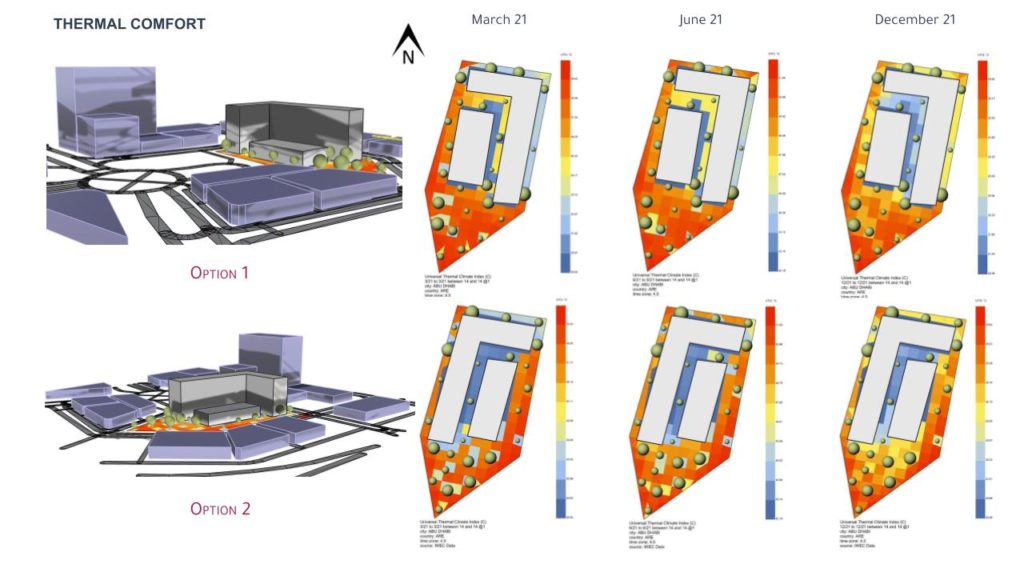
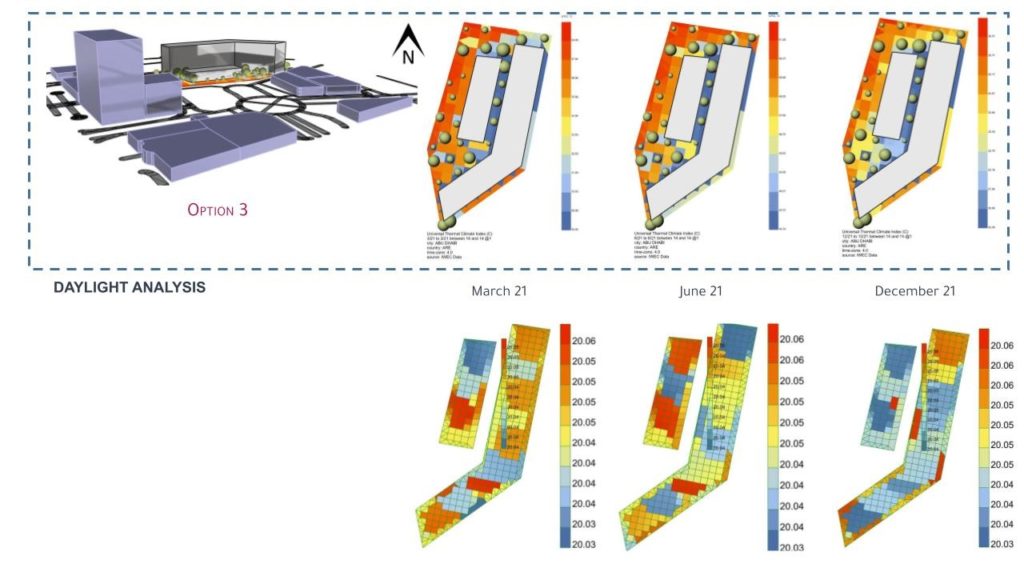
Three options were created by changing the building positions at sites. All the three options were showing varied amount of cold and heat stresses at site level.
Key Points – Thermal comfort
- Options 1 & 2 has more strong heat stress than option 3.
- Cold stresses are more from option 3 as the larger building at site blocks the sun’s radiation from the east.
Key Points – Daylight Analysis
- To have have less openings in the east where there is excessive sun and have more opening in the west
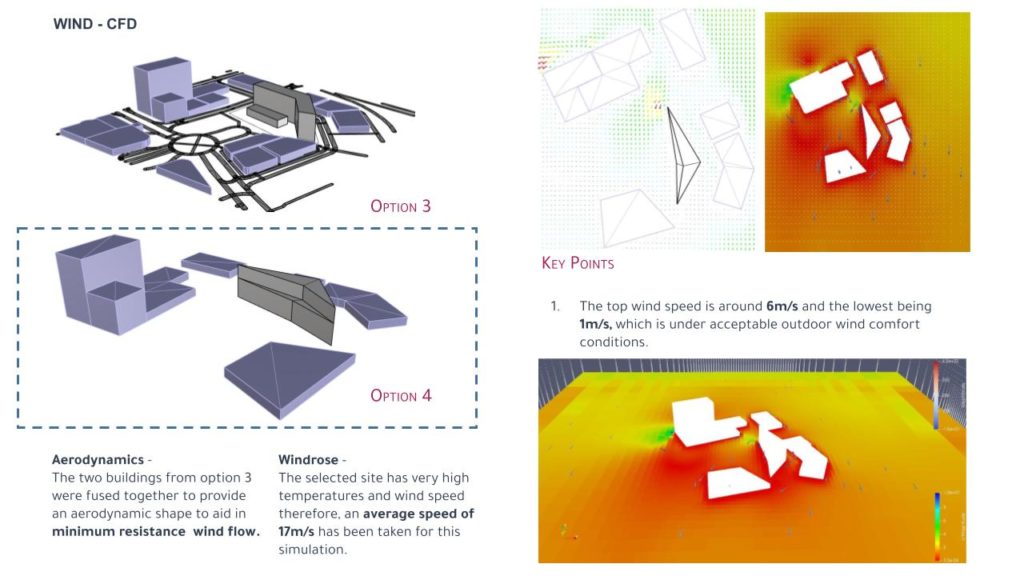

Key Points
- Option 4 has less dangerous winds from the north direction.
- Option 4 has minimum resistance to wind flow.
- Option 3 has more deflection to the wind flow which results in more dangerous winds.

Key Points
- Option 4 has more comfortable winds around the building than option 3.
InFraRed & Wind CFD Comparision


